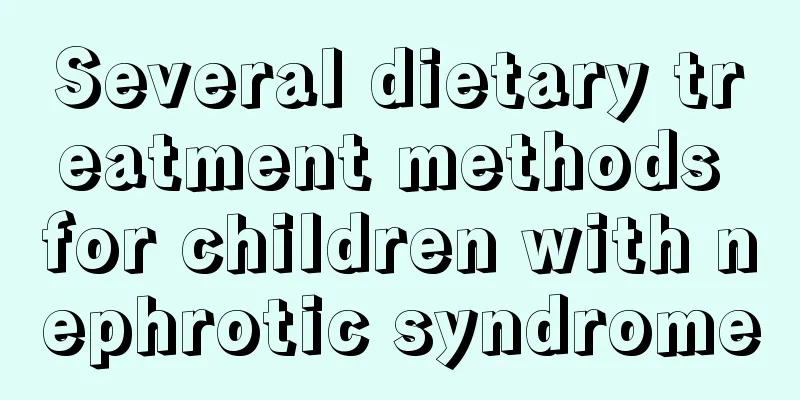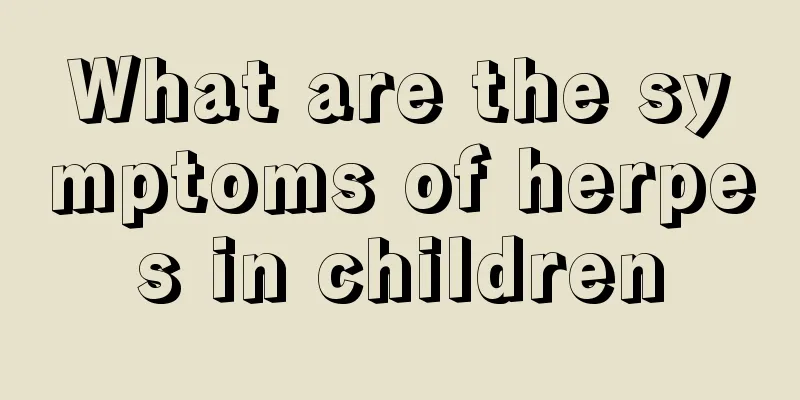Several dietary treatment methods for children with nephrotic syndrome

|
Here are some dietary treatments for children with nephrotic syndrome. There are many ways to treat nephrotic syndrome with diet. The following are several dietary therapy methods for nephrotic syndrome in children, which are very beneficial for the treatment of nephrotic syndrome. 1. Low salt. For patients with nephrotic syndrome, low salt is the most basic principle. When edema is severe, salt intake should be stopped. This is because some sodium in salt, after being decomposed by the human body, will increase the burden on the kidneys, thereby worsening edema. Salt-restricted diets, due to their tastelessness, can cause loss of appetite in many patients, affecting the intake of protein and calories. For patients with relatively normal renal function, salt intake should also be limited when edema occurs. 2. Limit protein. Generally speaking, if the condition of nephrotic syndrome is serious, patients should pay special attention and appropriately limit protein intake. It is advisable to consume about 40 grams of protein per day. Eggs and dairy foods are preferred. One egg contains about 6 grams of protein, and a bowl of milk (about 200 ml) contains about 6 grams of protein. Latest answer 2013-11-29 1. Children with kidney disease should avoid catching colds, overwork, and appropriate activities according to their personal circumstances, but not strenuous exercise. 2. All parents and children with kidney disease should build up confidence in fighting the disease and keep children with kidney disease in a good mood. 3. Dietary principles: Mainly eat high-quality protein and high-calorie diet. For patients with edema and hypertension, salt intake is limited to less than 3 grams per day, but long-term unreasonable salt abstention should be avoided. People with renal damage should limit protein intake according to their renal function. Those with obvious edema and proteinuria should eat more high-quality protein, such as milk, egg protein, fish, lean meat, etc.; when appetite is poor, the diet should be light, and eat small meals frequently; people with low potassium can eat oranges, mushrooms, etc. 1. Pay attention to protein intake: Patients with nephrotic syndrome often have negative nitrogen balance, such as consuming a high-protein diet. It is possible to turn to positive nitrogen balance. If there are enough calories and protein in the diet of patients with nephrotic syndrome, high protein intake will lead to an increase in proteinuria and increase the degree of glomerular damage in patients with nephrotic syndrome. 2. Low-salt diet: Patients with nephrotic syndrome who are undergoing high-dose hormone treatment or have edema should be given a low-salt diet. A low-salt diet requires a daily sodium intake of 3-5g, and patients can also consume low-sodium salt. During the low-salt diet period, you don't need to eat salted duck eggs, salted eggs, pickles, etc. 3. It is advisable to choose high-calorie foods rich in vitamins A and C (non-sugar foods). 4. Foods that can stimulate the kidneys, such as peppers, mustard, etc., should be avoided. The basics of diet therapy 1. If you have edema or high blood pressure, or if you have this tendency, limit your salt intake. 2. In case of severe proteinuria, the protein intake should be increased when the protein level in the blood is reduced. 3. Limit protein intake. When nitrogen compounds in the blood increase, protein intake should be limited. 4. If urine volume decreases, or there is anuria or anuria, water intake should be limited. A low-salt, low-fat diet and a high-quality protein diet, that is, eat more lean meat, egg white, fish and other animal proteins, and avoid all plant proteins such as soy products. The above are several dietary therapy methods for children with nephrotic syndrome that I introduced to you. Diet for children with nephrotic syndrome The above dietary methods all have great auxiliary value in the treatment of nephrotic syndrome. It is hoped that patients will follow these dietary principles in their daily lives and arrange their diet structure reasonably according to their condition. I hope the dietary therapy I introduced can be helpful to children with nephrotic syndrome. I wish you a speedy recovery. |
<<: Introduction to the manifestations of precocious puberty in children
>>: Introducing several massage techniques for common pediatric diseases
Recommend
What should be paid attention to when five-year-old children lose their teeth
Teeth are very important to each of us. Children&...
Symptoms of middle ear inflammation in children
Otitis media is a common disease in our lives, bu...
What is the reason why there are black threads in baby’s stool?
After the birth of a newborn, many mothers will e...
How to deal with a child who falls
Children's skin is very delicate, and their k...
Can anal prolapse cause coughing in children?
Will children's rectal prolapse cause coughin...
What should I do if my baby has diarrhea due to poor digestion?
Babies often get sick when they are growing. Sinc...
What's wrong with the baby's red spots?
Babies are the ones we need to focus on taking ca...
Why does my baby’s knee hurt?
Because babies are still very young, they do not ...
Baby's limbs are twitching
In the process of taking care of the baby, parent...
What is the cause of the sunken posterior fontanelle?
A baby is one of the most important members of a ...
What foods can’t babies eat when they have diarrhea? It is important to learn to avoid certain foods
Adults have to learn to avoid certain foods when ...
What should I do if my eight-month-old baby refuses to eat complementary food?
Many mothers will find a problem when adding comp...
What should 2-year-old babies eat to supplement calcium?
Speaking of the baby's health, I believe this...
Do all babies get roseola infantum?
In fact, pediatric emergencies are very common in...
What are the methods of traditional Chinese medicine to prevent and treat hand, foot and mouth disease?
In recent years, hand, foot and mouth disease has...









